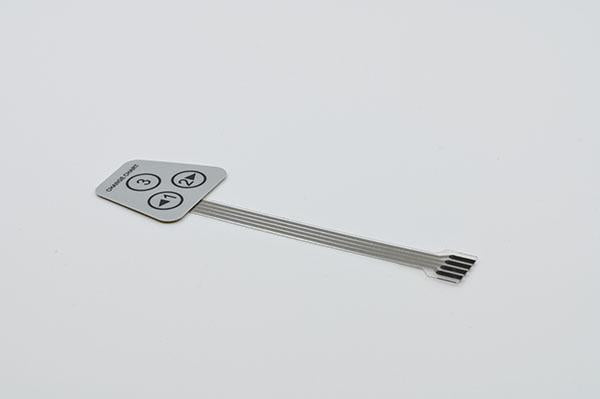The Role of Membrane Switches in Enhancing Product Aesthetics
Recognizing the Relevance of Membrane Switches in Interface
Membrane switches are important elements in the layout of efficient customer interfaces, facilitating not just capability but likewise improving aesthetic allure and individual interaction. Their unique attributes, such as resistance to adjustable styles and ecological factors, make them appropriate for a diverse range of applications throughout several markets. As we explore the numerous advantages and future trends connected with Membrane modern technology, it ends up being clear that these switches are greater than just elements; they stand for a convergence of advancement and usefulness. The ramifications of this modern technology on customer experience are worth analyzing better.
What Are Membrane Buttons?

The spacer layer, which includes glue residential or commercial properties, enables the splitting up of the circuit layer from the overlay, guaranteeing that the switch continues to be in a non-activated state until pressed. When stress is related to the overlay, it presses the spacer layer, linking the space and finishing the circuit in the underlying layer. This style not only lowers the physical space required for typical mechanical buttons yet also enhances the toughness of the gadget, as Membrane buttons are generally immune to dirt, dampness, and other ecological factors.
Commonly located in applications ranging from customer electronic devices to clinical gadgets, Membrane buttons are important to contemporary technology, offering a reliable and user-friendly user interface that straightens with modern design requirements.
Advantages of Membrane Switches
While numerous switch innovations exist, Membrane Switches deal unique advantages that make them particularly preferable in various applications. One of the main advantages of Membrane buttons is their compact design, which permits space-saving implementations in tools where property is restricted. Their thin account not only improves visual appeal yet likewise facilitates lightweight construction.
An additional considerable benefit is their resistance to environmental variables. Membrane switches are normally secured against moisture, dust, and pollutants, making them optimal for use in demanding settings, such as medical gadgets and industrial devices. This toughness prolongs the life-span of the switch, decreasing upkeep expenses and enhancing integrity.
Moreover, Membrane switches can be customized to satisfy details layout demands, integrating distinct graphics and shades that enhance user communication. Their responsive feedback choices can also be tailored to give a rewarding customer experience. Furthermore, Membrane buttons are economical, specifically in high-volume applications, as they can be created efficiently.
Applications in Various Industries
In the customer electronic devices market, Membrane switches prevail in devices such as microwaves, washing equipments, and remote controls. Their responsive responses and visual options improve individual experience while giving a sleek, contemporary look. Furthermore, auto suppliers make use of Membrane switches in dashboard controls and infotainment systems, where space is limited, and user engagement is important.
Moreover, the industrial industry leverages Membrane buttons in control panels for machinery and devices, enabling intuitive operation in frequently severe settings. Their resistance to chemicals and moisture makes sure durability and integrity in these applications. On the whole, the versatility of Membrane Switches adds dramatically to their widespread usage, making them important in different technical domain names.
Style Considerations for Membrane Buttons

When designing Membrane switches, several crucial factors to consider need to be thought about to guarantee ideal functionality go to the website and customer experience. The option of try this site products is vital; selecting durable, high-quality substratums can improve the switch's durability and resistance to ecological variables such as moisture and temperature variations.
Second of all, the design of the graphic overlay need to prioritize clarity and simplicity of use. Symbols and text have to be legible, and the layout must facilitate intuitive interaction (membrane switches). Additionally, tactile responses is essential; integrating a tactile dome or other devices can enhance the user experience by supplying physical verification of activation
An additional vital factor is the button's electric efficiency. Developers have to ensure that the conductive traces are properly made to decrease resistance and stay clear of signal disturbance. This includes assessing the called for actuation pressure and guaranteeing compatibility with the digital parts they will interface with.

Future Fads in Membrane Modern Technology
As innovation remains to advance, Membrane switches are poised to evolve significantly, driven by technologies in products and producing methods. One emerging trend is the unification of innovative materials, such as conductive inks and flexible substratums, which enhance longevity and reduce the general weight of Membrane switches. These products not just enhance the responsive action but additionally permit the style of buttons that see page can endure harsher environmental conditions.
In addition, the combination of touch-sensitive technologies is transforming standard Membrane Switches right into more interactive interface. Capacitive touch sensors embedded within Membrane button panels can provide a much more receptive and intuitive customer experience, straightening with the growing demand for sleek, modern-day layouts in consumer electronic devices.
In addition, innovations in printing strategies, such as electronic and 3D printing, make it possible for fast prototyping and personalization of Membrane buttons. This adaptability permits makers to react quicker to market needs and consumer choices.
Last but not least, sustainability is coming to be a substantial emphasis, with makers discovering eco-friendly products and procedures. As these patterns unravel, the future of Membrane technology guarantees boosted functionality, aesthetic appeal, and environmental duty, solidifying their duty in advanced individual interfaces throughout different markets.
Conclusion
To conclude, Membrane Switches stand for a crucial part in the design of interface, integrating capability with aesthetic versatility. Their benefits, including longevity and resistance to environmental factors, make them appropriate for diverse applications throughout various industries. In addition, thoughtful design factors to consider enhance user interaction and experience. As developments in innovation continue, the evolution of Membrane switches is expected to additional improve interface, driving technology and boosting functionality in a significantly intricate technological landscape.
Membrane buttons are indispensable parts in the design of reliable customer interfaces, promoting not only capability however additionally enhancing aesthetic charm and user interaction.Membrane Switches serve as an essential element in numerous individual interfaces, promoting a seamless communication between individuals and digital tools.While many button technologies exist, Membrane Switches deal distinct benefits that make them particularly desirable in different applications.Furthermore, Membrane buttons can be tailored to satisfy particular style demands, integrating unique graphics and colors that boost user interaction.In conclusion, Membrane Switches stand for an essential component in the layout of user interfaces, integrating performance with aesthetic flexibility.